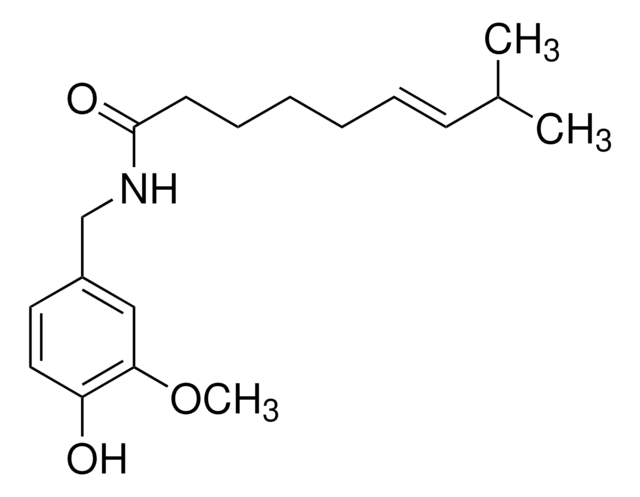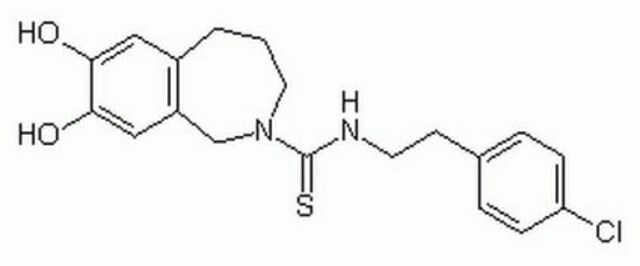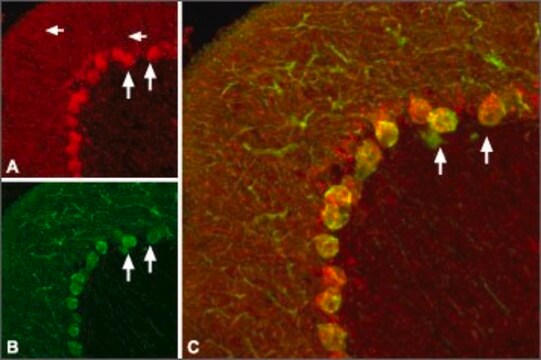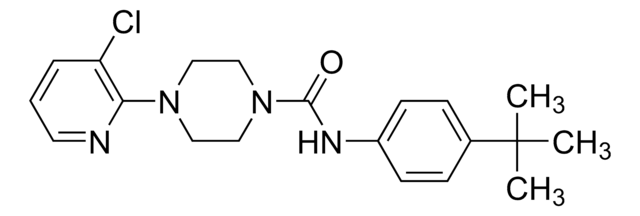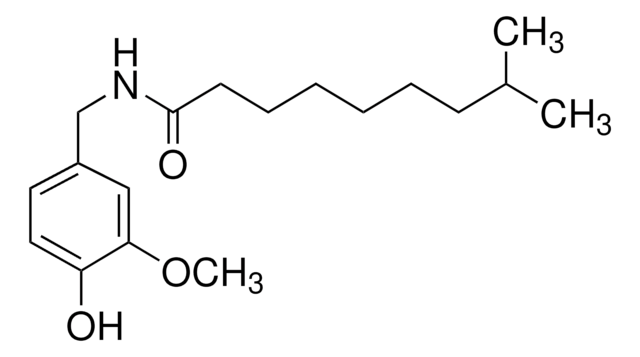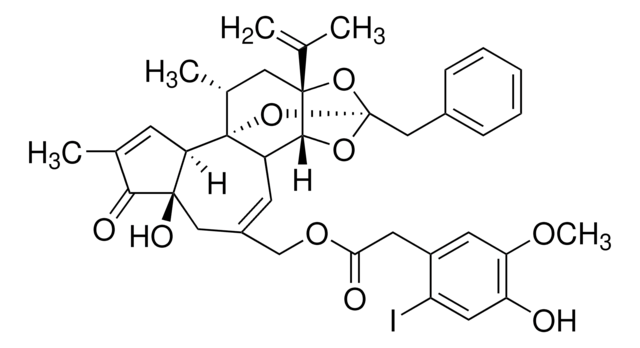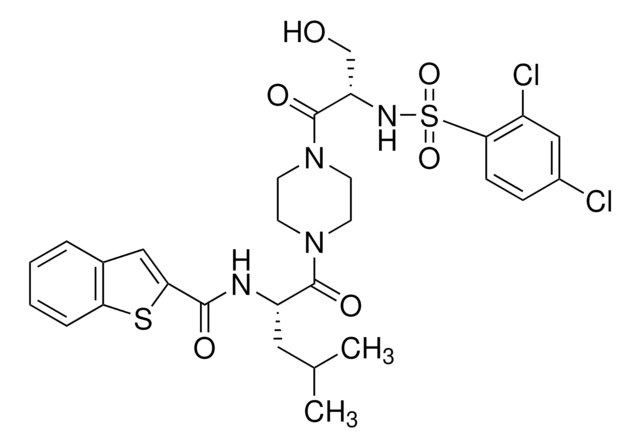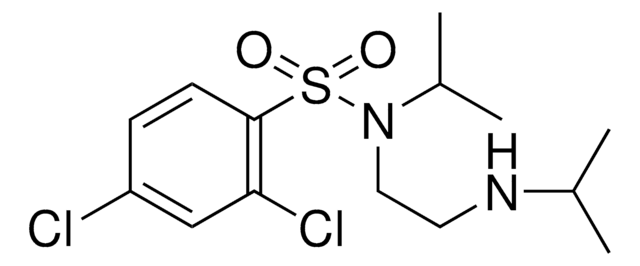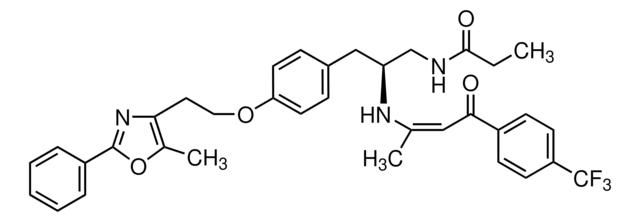C191
Capsazepine
≥98% (HPLC), solid, TRPV1 antagonist
Synonym(s):
N-[2-(4-Chlorophenyl)ethyl]-1,3,4,5-tetrahydro-7,8-dihydroxy-2H-2-benzazepine-2-carbothioamide
About This Item
Recommended Products
product name
Capsazepine, ≥98% (HPLC), solid
Quality Level
assay
≥98% (HPLC)
form
solid
color
off-white
solubility
DMSO: >10 mg/mL, clear
storage temp.
2-8°C
SMILES string
Oc1cc2CCCN(Cc2cc1O)C(=S)NCCc3ccc(Cl)cc3
InChI
1S/C19H21ClN2O2S/c20-16-5-3-13(4-6-16)7-8-21-19(25)22-9-1-2-14-10-17(23)18(24)11-15(14)12-22/h3-6,10-11,23-24H,1-2,7-9,12H2,(H,21,25)
InChI key
DRCMAZOSEIMCHM-UHFFFAOYSA-N
Gene Information
human ... TRPV1(7442) , TRPV4(59341)
rat ... Trpv1(83810)
Looking for similar products? Visit Product Comparison Guide
Application
- to study its effect on capsaicin induced extracellular signal-regulated kinase (ERK) phosphorylation
- to study the role of TRPV1 in central terminals on nociception in rats
- for functional characterization of the TRPV1 in bull spermatozoa
Biochem/physiol Actions
Storage Class
11 - Combustible Solids
wgk_germany
WGK 3
flash_point_f
Not applicable
flash_point_c
Not applicable
ppe
Eyeshields, Gloves, type N95 (US)
Certificates of Analysis (COA)
Search for Certificates of Analysis (COA) by entering the products Lot/Batch Number. Lot and Batch Numbers can be found on a product’s label following the words ‘Lot’ or ‘Batch’.
Already Own This Product?
Find documentation for the products that you have recently purchased in the Document Library.
Customers Also Viewed
Our team of scientists has experience in all areas of research including Life Science, Material Science, Chemical Synthesis, Chromatography, Analytical and many others.
Contact Technical Service